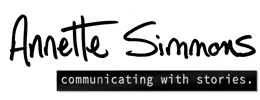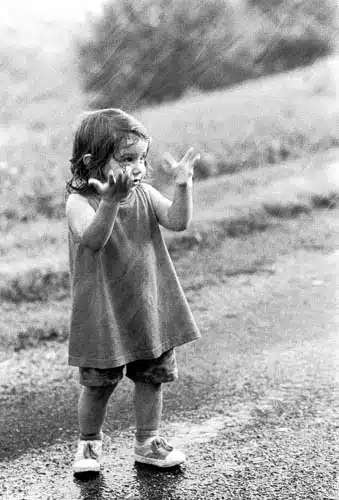
Defining Story as a Significant Emotional Experience
My current teaching definition of story is:
“the narration of a significant emotional experience that feels meaningful to both teller and listener.”
Teaching non-professional storytellers helped me realize that it is much easier for them to find a great story if I ask them to think about a significant emotional experience from real life or existing literary and film stories. I never suggest a beginner try to construct a story from scratch. The best storytelling advice in the world will not help you describe something you have never experienced. Coming from the arts, I favor Tolstoy’s perspective that the role of any art (including story) is to communicate emotion. He wrote that art begins when a person, “with the purpose of communicating to other people a feeling he once experienced, calls it up again within himself and expresses it with certain external signs.” (By external signs he means dance, images, and other arts, including storytelling.) I strongly believe the stories that resonate most with others always reflect experiences of truth and beauty that connect us to what Tolstoy calls the “oneness of life’s joys and sorrows.” In War and Peace, for instance, Tolstoy showcases the kind of extreme experiences that change people forever and how love changes the trajectory of our lives.
Once people learn to mine genuine memories of significant emotional experiences, they learn to recognize stories that ring true and represent the way life actually works, they learn how to avoid inventing stories that misrepresent or mislead. This isn’t new advice. This is the same advice that suggests writers write what they know. Creative storytellers may invent fantastical worlds to illustrate core truths but they don’t try to invent new core truths out of thin air. Unfortunately, some of the popular templates for storytelling don’t always prioritize this.
Excerpt from Chapter 11, 3rd ed. of The Story Factor (2019) AUDIBLE VERSION HERE


2 thoughts on “Storytelling Moral Survival System: Part six”
Hi Annette, I love these moral survival storytelling blog series. In particular this one rings a bell with your statement that stories that resonate most with others always reflect experiences of truth and beauty… I couldn’t agree more! For me the quote by Galileo helps me in the data and science world is “All truths are easy to understand once they are discovered…the point is to discover them.” Part of helping others see these “truths” is in the storytelling using allegories, parables, and the like to portray a mind’s eye picture of a key message that is being communicated. I hope you continue these little snippets – I do find them useful and enjoyable.
Hey Randy! So good to hear from you. I’m a big fan of Galileo – he used storytelling (Dialogos) to keep from being bunred at the stake. He is of my favorite heretics – because he survived. My idea of Big T Truths include coming to terms with both/and paradoxes (security/freedom, individual/collective, etc.) that seem to be eternally difficult to understand. As if moral reasoning should stay difficult specifically because it keeps humans who make big decisions emotionally engaged and attentive. Your thoughts?